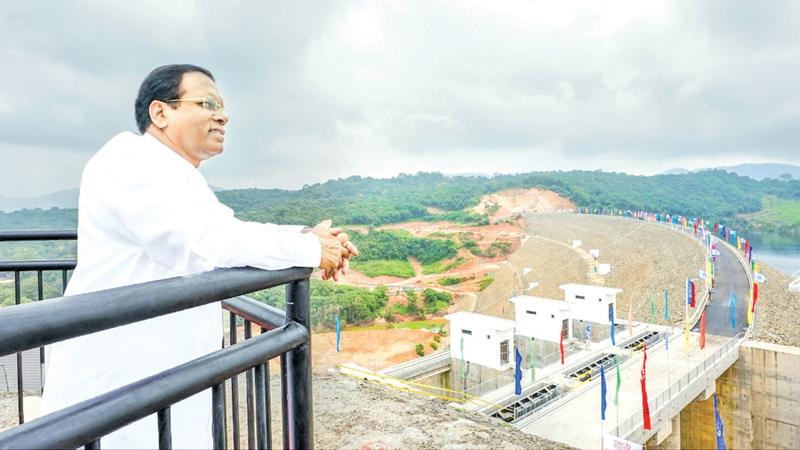
Last week, President Maithripala Sirisena , commemorating four years of Presidency vested the new Laggala green city in the people. It also marked the realisation of a sustainable development target set by the President after taking office on January 8, 2015.
For millennia, Mahaweli, the longest river in the country had been the lifeline of the nation. Having the largest catchment area of a single river and with a network of tributaries, the Mahaweli flows through sustaining one sixth of the land mass of the island (10,448 square kilometres/4034 square miles).
The gigantic Mahaweli Development Scheme, was to benefit Anuradhapura, Polonnaruwa, Ampara, Trincomalee, Batticaloa, Vavuniya, Kilinochchi and Jaffna districts with its life giving water.
The Moragahakanda-Kaluganga Project (MKP) was to be the culmination of this humongous development project. It was the project which was planned to sustain the landmass from Rajarata to Jaffna on the Northern front and from Trincomalee to Batticaloa on the Eastern front.
However, it was not to be, for 40 years.
When the accelerated Mahaweli project prioritised electricity generation, irrigation and drinking water requirements of the people took a backseat, until the project was revived and implemented during the past few years.
It was the intervention of President Maithripala Sirisena which breathed life into a dormant project. His agitation for its revival since the time he was elected a Member of Parliament from the Polonnaruwa District resulted in its launch during the tenure of President Rajapaksa.
However, it was actively pursued only after January 2015, under the leadership of President Sirisena.
Moragahakanda-Kaluganga could lead to a paradigm shift in the lifestyle of the residents in the most arid parts of the country such as the Northern, Raja Rata, North Western and North Central areas once it is completed in 2023.
Out of the project’s total water capacity amounting to 660,000 acre-feet, 90 per cent is to be utilised to meet the irrigation and drinking water needs of those in the Raja Rata, North, East and the North West. In addition, it serves a total of 1601 tanks in the area.
When such colossal projects are undertaken, most of the time residents of these areas have to make sacrifices. This was true for this project as well. The residents of the old Laggala town, made a tremendous sacrifice for the success of the Moragahakanda-Kaluganga project. When the 218 metres long and 68 metres high main dam was constructed at Pallegama in Laggala the entire Laggala town was submerged. Altogether, 4148 hectares was acquired for the project including 631 Ha. of private lands with 3500 houses belonging to 23 Grama Niladhari Divisions. The need arose to construct a new planned city to cater to the needs of the people displaced by the construction of the Moragahakanda-Kalunganga Project.
Each family who sacrificed their land in the old Laggala town for the project was granted 2 acres of land including 1 ½ acres of paddy land, in the Kalu Ganga valley. A total of Rs. 110 million, was also paid to the families as compensation.
A new town with modern amenities spanning over 75 hectares was built with a total capital outlay of Rs. 4,500 million, which includes Rs. 2,043 million for the 112 government buildings.
The Laggala new town is a complete town with all modern facilities by way of schools, hospitals, shopping complexes, public play ground, central bus stand, post office, banks and many other public utilities.
The Moragahakanda-Kaluganga project is a great boon to the people. The new city also is targeted to be a sustainable green city, with many measures taken to prevent degradation.
While the city’s garbage would produce organic fertiliser and bio-gas under the guidance and technical expertise from the University of Peradeniya, a solar-power generation project is in the pipe-line.

